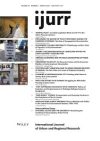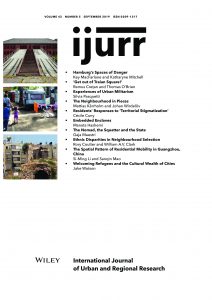In this article, we investigate the transformation of local public spaces in the ethnically and socially diverse housing area Norra Fäladen during 1970–2015. After being built, the area soon faced stigmatization and became known as a problem area. This was followed by a series of investments in local public spaces aiming for a stronger appropriation of the neighbourhood by its inhabitants. The production of a ‘neighbourhood spirit’ has, however, slowly deteriorated over the last two decades. Through the introduction of new areas, with large single‐family houses on the one hand, and a densification of the existing housing stock on the other, the inhabitants’ dependence on the existing (but now decreasing) public spaces within the area has been polarized. Local public spaces are also being increasingly relocated from central parts of the neighbourhood to the peripheries or outside the area. In this article, we investigate how this quite slow, yet steady, transformation has affected the local public spaces and the everyday life of the area.
Details
Written by:
Mattias Kärrholm & Johan Wirdelöv
Digital Object Identifier (DOI)
10.1111/1468-2427.12735
About DOI

